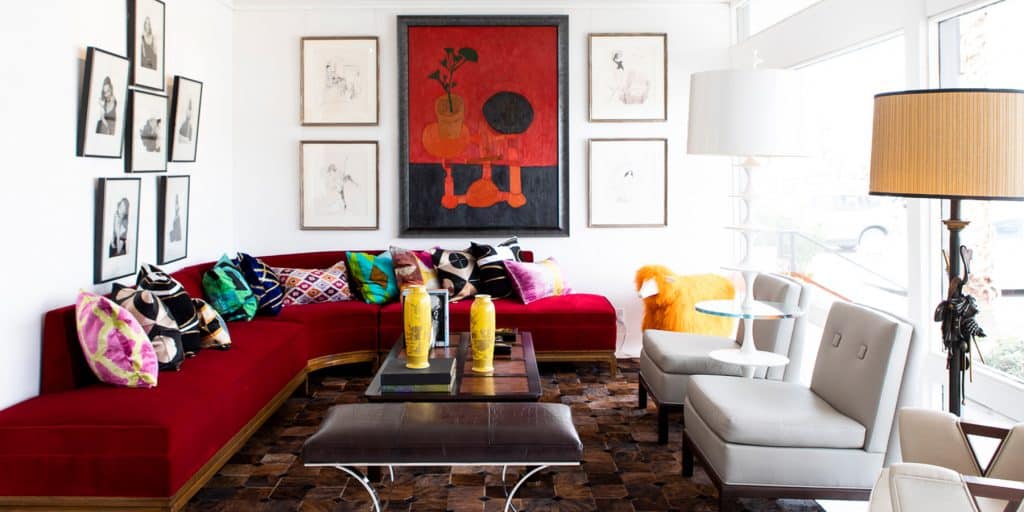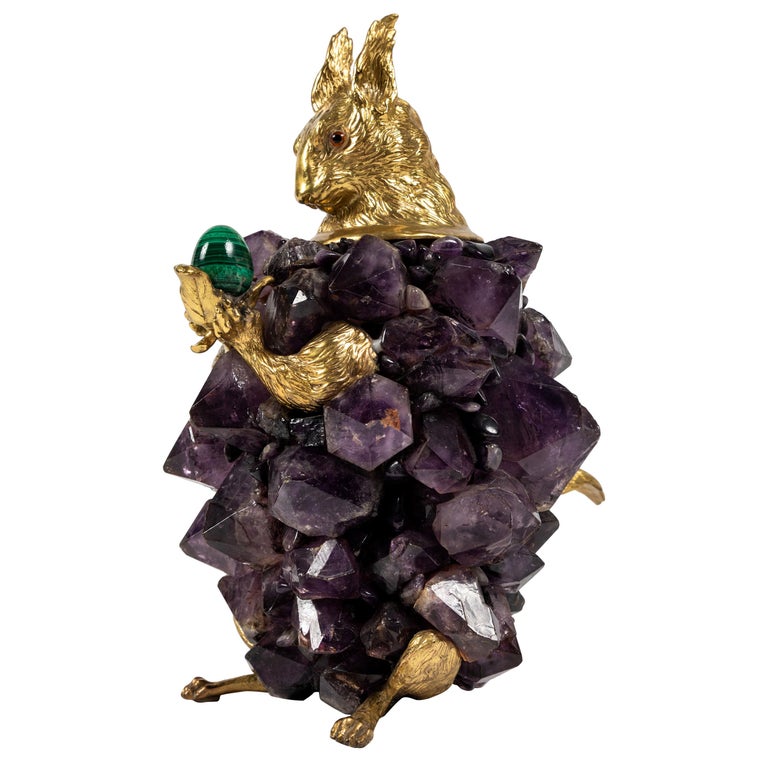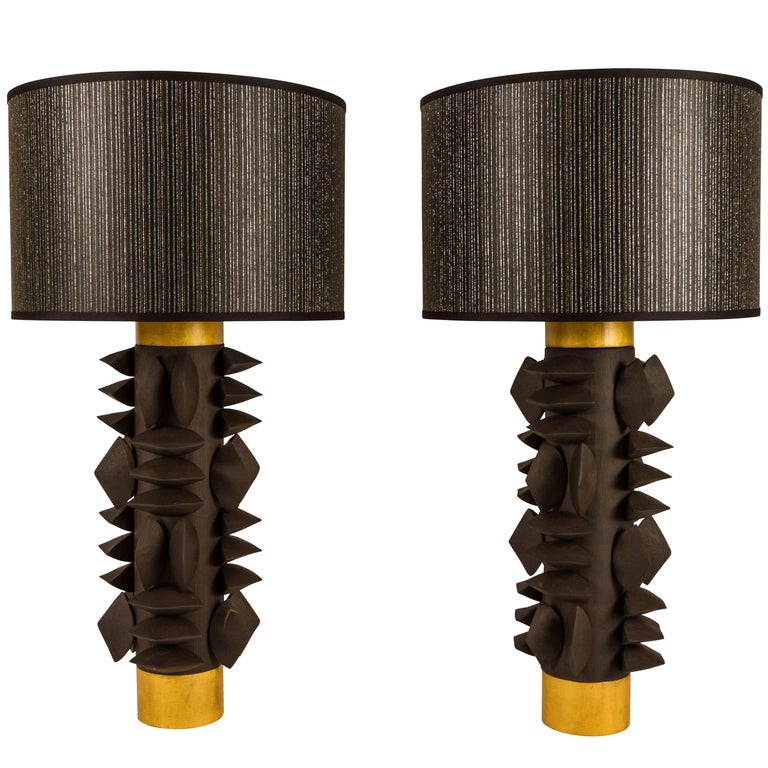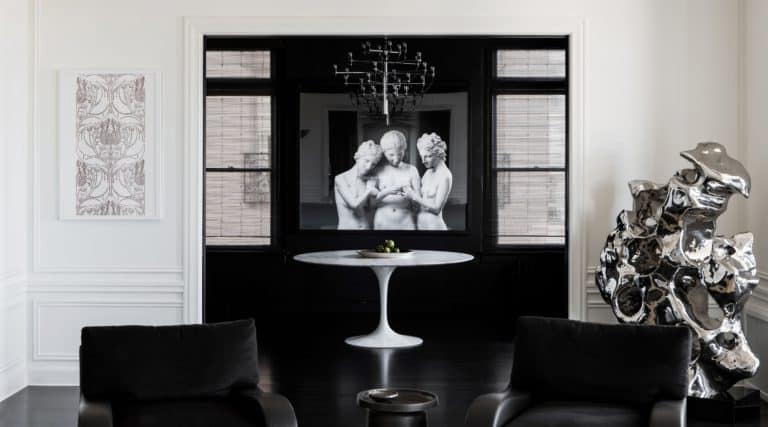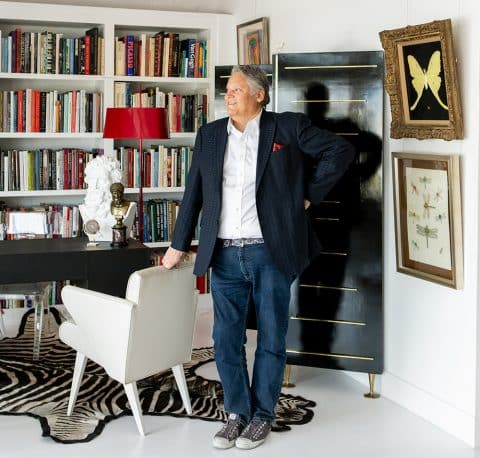
March 22, 2020In his new Palm Desert, California, gallery, Patrick Dragonette stands next to his Portofino chair, which references Paul Frankl’s Speed chair. A red Hervé Van der Straeten floor lamp illuminates a contemporary plaster bust on a writing table. Top: The gallery sitting area contains a vintage velvet sofa and a pair of custom Everett Sebring slipper chairs set on either side of a Dragonette Private Label lamp made from turned maple. “I call it the Diego,” the designer says, “in honor of Diego Giacometti.”
Unlike other successful businessmen, Patrick Dragonette did not relocate to Palm Desert, California, to cash in his chips and retire. As a dealer in Los Angeles over the past 23 years, and as a 1stdibs dealer since 2004, the Dragonette Ltd. founder has parlayed his access to impressively provenanced custom home decor by the likes of William Haines, Samuel Marx and Frances Elkins into additional pursuits, like designing interiors and furnishings, as well as serving as president of the La Cienega Design Quarter.
Now, the tastemaker is doubling down in the desert with a new namesake gallery that, at 5,000 square feet, is nearly twice the size of the L.A. digs he shuttered in late 2019. “Out here, I have a little more freedom,” he observes happily. “People embrace more color than in L.A,. and it’s allowed me to indulge in tangerine velvet upholstery.” Suitably, his new location is nestled among the high-fashion boutiques of Palm Desert’s upscale El Paseo shopping district. “Historically, El Paseo has been referred to as the Rodeo Drive of the desert,” Dragonette says with a smile.
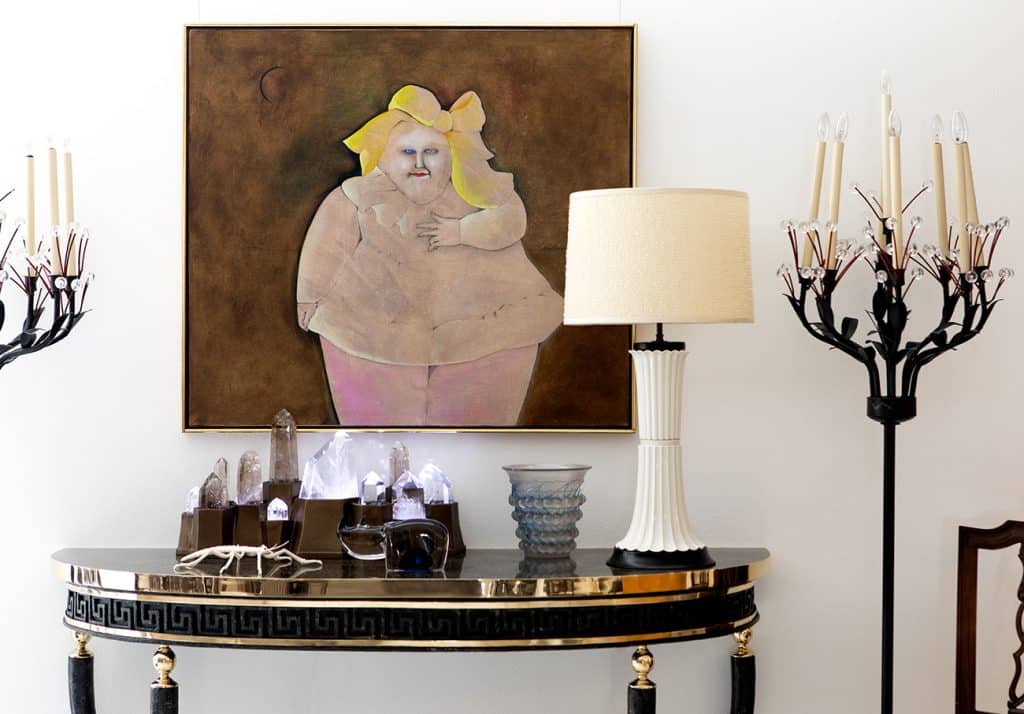
A pair of 1950s Tony Duquette Magic Forest torchères flank a Maitland-Smith demilune console that holds a William Haines custom porcelain table lamp along with a Dragonette Private Label rock crystal tablescape lamp, a collaboration with Titia Estes. The oil painting, Fat Girl with a Yellow Bow, above is by folk artist Mary Spain. “Her figurative paintings are populated by wonderfully mischievous characters and are full of symbolism,” Dragonette says. “I find them compelling.”
It is also close to numerous sources of design inspiration: the mid-century-modern mecca of Palm Springs, the William Haines–decorated Sunnylands estate and Dragonette’s own residence, at the Marrakesh Country Club — the 1970s pink Moorish fantasia of Hollywood Regency architect John Elgin Woolf. But despite his physical move from Los Angeles, Dragonette remains aesthetically hardwired to the made-in-America Hollywood glamour of the 1930s to ’80s, from Paul Frankl’s Art Deco designs to T.H. Robsjohn-Gibbings’s sleek neoclassical works, from Tony Duquette’s fanciful bricolage to Karl Springer’s luxurious minimalist pieces.
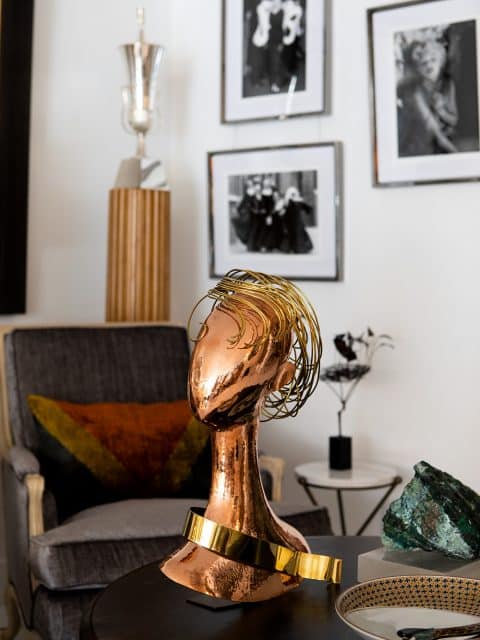
Dragonette’s design sensibility embraces both classical forms, like the Tommi Parzinger urn on a fluted wooden pedestal in the background, and contemporary abstracted ones, like the late-20th-century copper-and-brass bust by Austrian sculptor Karl F. Schmidt. On the wall, a group of Marilyn Monroe images are joined by a photo of a group of nuns smoking cigarettes.
To showcase his faithfully restored vintage furniture, bespoke designs and curated contemporary pieces, Dragonette transformed a former French Provençal design shop, removing arches and creating a floor-to-ceiling blank canvas with white paint. In display windows flanking the front door, he conjured a pair of inviting scenes: one, an elegant reading room in desert tones, with biscuit-tufted custom chairs, a petrified-wood coffee table and a Billy Baldwin brass étagère; the other, a vibrant lounging space, with Haines tub chairs, an Edward Wormley coffee table, a lipstick-red two-piece curved sofa and a wildly colorful abstract silkscreen by the British artist Albert Irvin.
Upon entering, visitors are greeted by a third vignette, comprising Salvador Dalí dishes and a Venetian mirror hanging above a Tommi Parzinger credenza topped by a pair of Haines ceramic monkey lamps with woven parasol shades. Dragonette has filled the store’s built-in display cases with jewelry from Chanel, YSL and Valentino; silver by Parzinger, Lino Sabattini, Allan Adler and Tiffany & Co.; figurines; ceramics; and a vast array of original Dorothy Thorpe glassware.
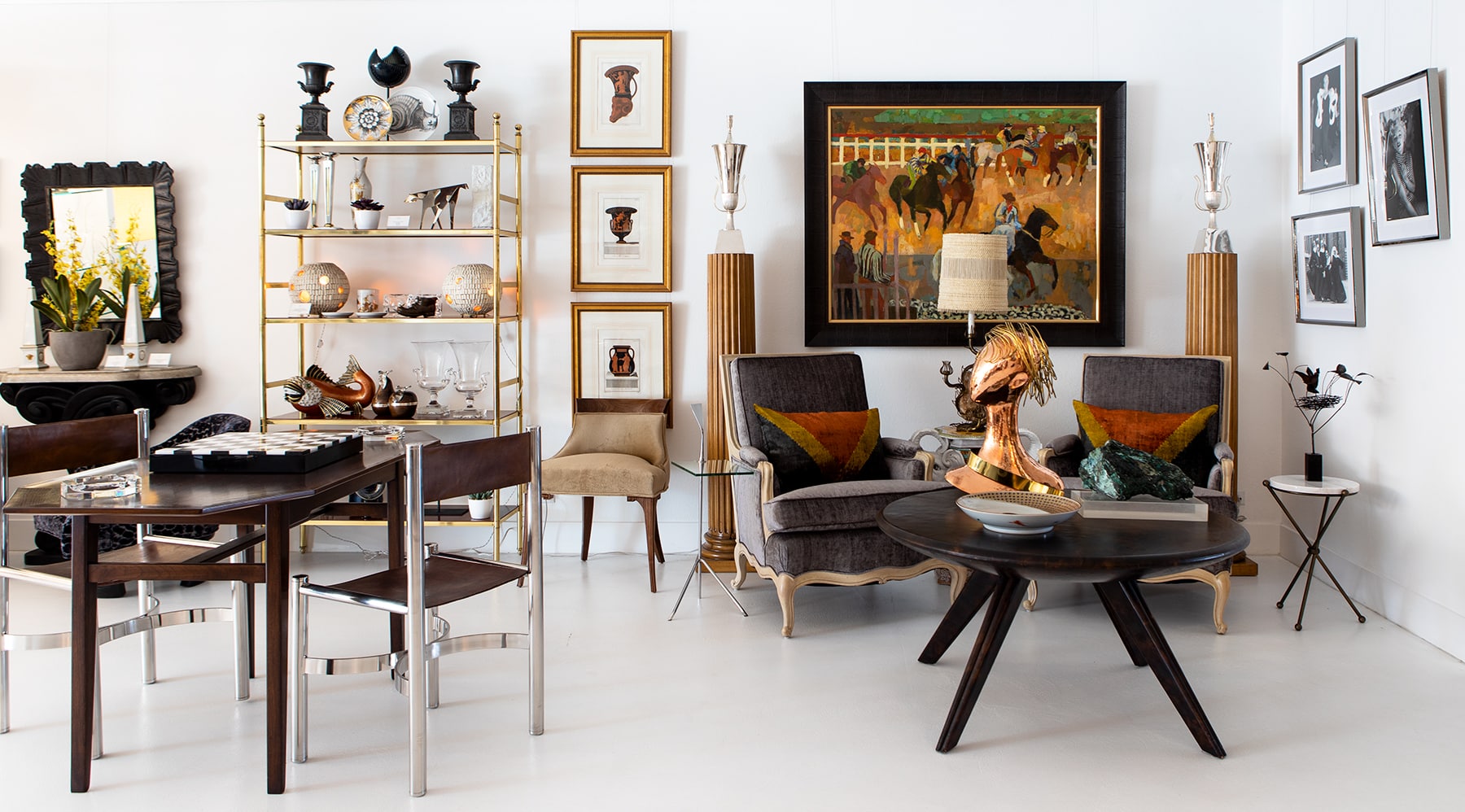
“I want to be true to my aesthetic,” Dragonette declares. “My litmus test is, if I don’t sell it, do I want to live with it?” In his gallery, stylish traditional pieces like a Frances Elkins console and mirror and a pair of 1940s fauteuils are juxtaposed with a Dunbar game table surrounded by 1970s Italian leather and chrome chairs. Next to the brass étagère, a Dragonette Private Label Loretta chair, inspired by French 1940s vanity chairs, exudes Hollywood glamour.
And although he has created a mosaic of sorts on the walls with a mix of classical prints, Arthur Court animal sculptures, 1950s movie star portraits by photographer Sid Avery, abstract canvasses and Mary Spain’s 1970s figurative folk-art paintings, Dragonette has also designated a separate area in the showroom for fine art shows. The opening exhibition is devoted to the abstract landscape artist Barry Lantz, whose work shares the space with a classic French bureau plat reinterpreted by the designer John Vesey in stainless steel with bronze-doré ornamentation.
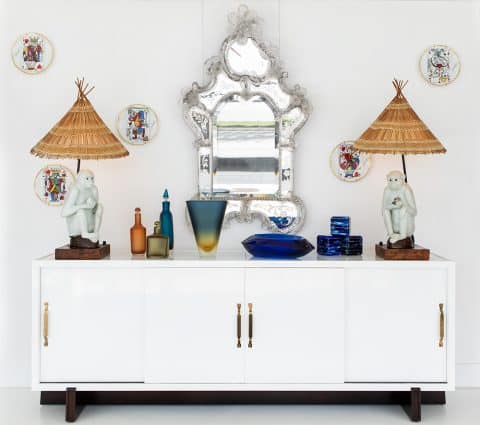
Animal images lend playfulness to the vignettes at Dragonette. Here, William Haines monkey lamps with woven shades by Dorothy Liebes bookend glass pieces by Paolo Venini on a Tommi Parzinger credenza. On the wall are ceramic plates by Salvador Dalí and a 19th-century Venetian mirror.
“I love a good ormolu,” enthuses Dragonette, who also has a weakness for Greek-key details, classical urns, obelisks and neoclassical designs. He is equally fond of contemporary makers who straddle art and functional design. “The Haas Brothers are mad geniuses,” he raves, “and I absolutely covet Ingrid Donat’s chairs.”
During our visit, we sit beneath a cluster of Philippe Halsman photographs that capture the actress Tallulah Bankhead at her most vivacious (“When people look at them and say, ‘Oh, Bette Davis!’ ” he jokes slyly, “I tell them I am going to have to confiscate their gay card”). Over the years, Dragonette says he has seen 20th-century American designers heat up and cool off, but his favorites maintain their value and appeal with identifiable flourishes.
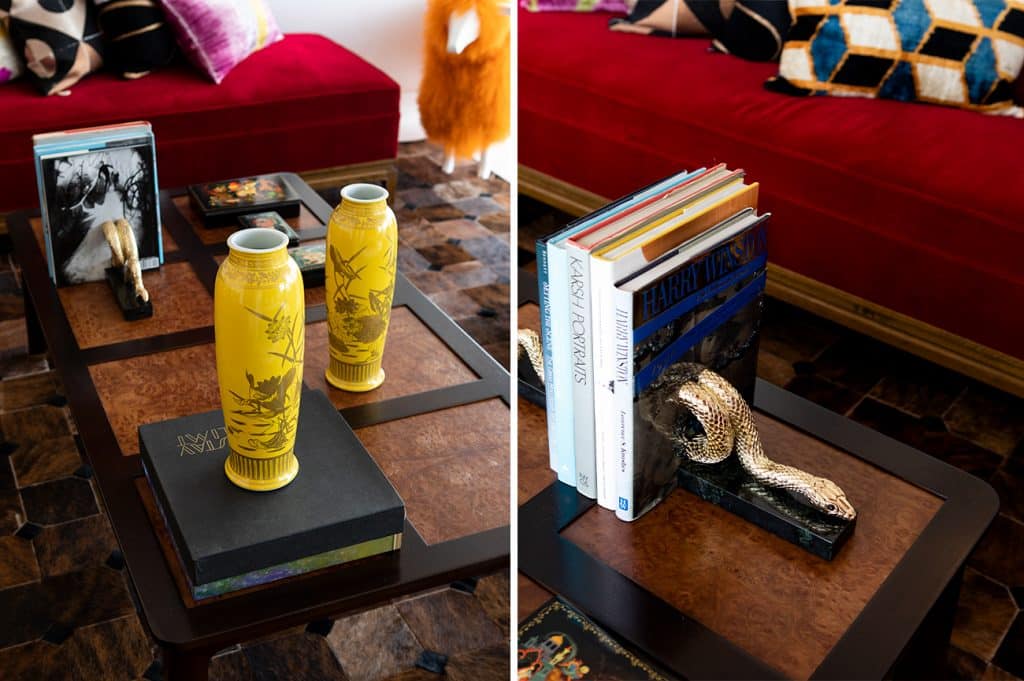
Left: A pair of yellow-glazed vases with gilt painting, made in Japan ca. 1960, provide a vibrant counterpoint to the rich Carpathian elm insets on an Edward Wormley cocktail table. The Dragonette Lalanne-inspired sheep behind, on the Kyle Bunting hair-on-hide carpet, can be custom-ordered in a variety of lacquer and wool colors. Right: “I think we all identify with nature, and if you look around the showroom, you will see that I wholeheartedly believe that,” says Dragonette. A case in point: brass snake bookends made by luxury brand L’Objet, which are part of Dragonette’s curated collection of contemporary goods. They stand guard on a 1950s Edward Wormley for Dunbar brass-footed walnut cocktail table inlaid with elm burl.
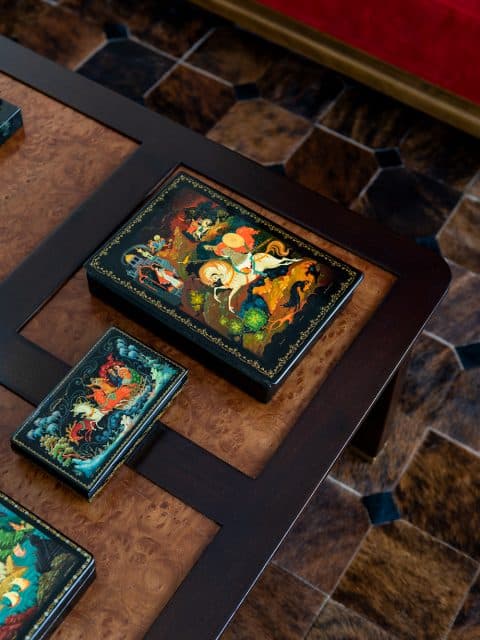
“I was attracted to this group of Russian boxes for their outstanding artistry,” Dragonette says of these colorful pieces, made before the collapse of the USSR. “They represent a now-gone moment in history. I understand that the artists working under Soviet rule used single-hair brushes to create the detailed scenes, all based on Russian fairy tales.”
“Monteverdi Young was a firm that did unique oversize executive desks outfitted with intercoms, biscuit-tufted sofas and really cool brass chairs,” he notes. “My experience buying those designs is that you sell it right away or you own it for a very long time.”
Tommi Parzinger’s signature was cabinetry with beautiful ornamental hardware and white, yellow or persimmon lacquer. “Nothing he did was ordinary,” Dragonette says.
He is equally reverent about the architect-designers Paul Frankl and Paul László: “Frankl really shone in the Art Deco period with his Skyscraper furniture and sofas with built-in bookcases, and he revolutionized using cork for tabletops. Both he and László designed commercial lines for Brown Saltman, and László’s custom work was brilliant. His paddle-arm lounge chair from the nineteen forties is one of the most commodious and welcoming I’ve ever sat in.”
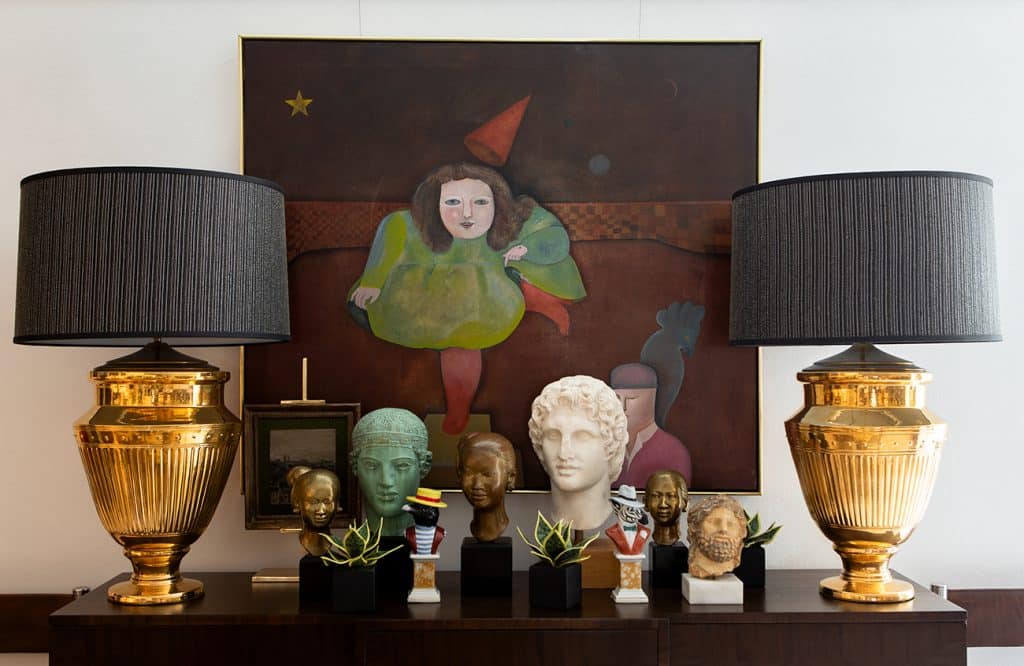
Classicism with a twist is a Dragonette signature. Here, gold-glazed urn-shaped lamps — from a project by Rancho Mirage interior design legend Steve Chase — sit on a bookmatched-mahogany server along with a variety of busts, including one of a blackbird in Venetian gondolier dress. “Both serious and whimsical busts always seem like an appropriate accent,” Dragonette says. On the wall is Mary Spain’s Girl on a Pedestal.
It is film-actor-turned-interior-designer William Haines, however, who earns Dragonette’s highest praise. “My father was an antiques dealer and collector, and I spent a decade in the theater in New York, but I had no idea who Haines was. When I opened my showroom in Los Angeles, I had a friend who wanted to consign a pair of Haines chairs. I was instantly smitten. They were smart, beautiful and functional — totally comfortable, with perfect pitch. I needed to know everything about this man.”
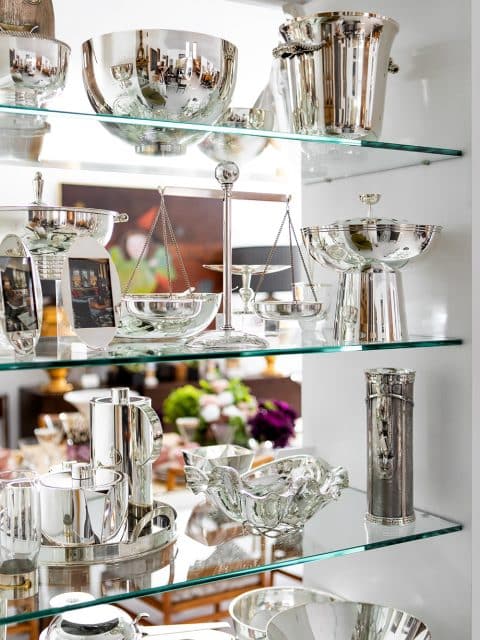
“People associate me with high shine,” says Dragonette, whose impressive collection of silver ranges from Art Deco cocktail ware to mid-century Parzinger compotes to contemporary candlesticks and tea sets. “A bit of silver can elevate any interior. I cherish the glow it brings to objects. There is a depth to silver that other white metals miss.”
What he learned about Haines, who from the 1930s to the ’70s designed for movie stars and moguls, was that he created each piece specifically for the client’s needs. “The chairs for Sidney and Frances Brody’s house were incredibly big and deep because she was six feet tall,” recalls Dragonette, who has acquired a Haines-designed cork-veneered floor lamp from the Brody home.
Customization à la Haines is key to Dragonette Private Label, the made-to-order line of furniture and lighting he launched 15 years ago with a Lucite step stool he wittily dubbed the Social Climber. In addition to Lucite seating that references klismos chairs and Egyptian thrones, the collection offers Parzinger-inspired cabinets and dining and lounge chairs with Art Deco, 1940s French and Hollywood Regency flair, available in a variety of woods, finishes, colors and fabrics. For lighting, Dragonette teamed with Los Angeles ceramist Titia Estes to craft table lamps with matte-black sculptural bases. He also created the Pedra collection, which illuminates rock crystal points and agate slices set atop or into Haines’s signature lamp configuration of museum mounts and armatures.
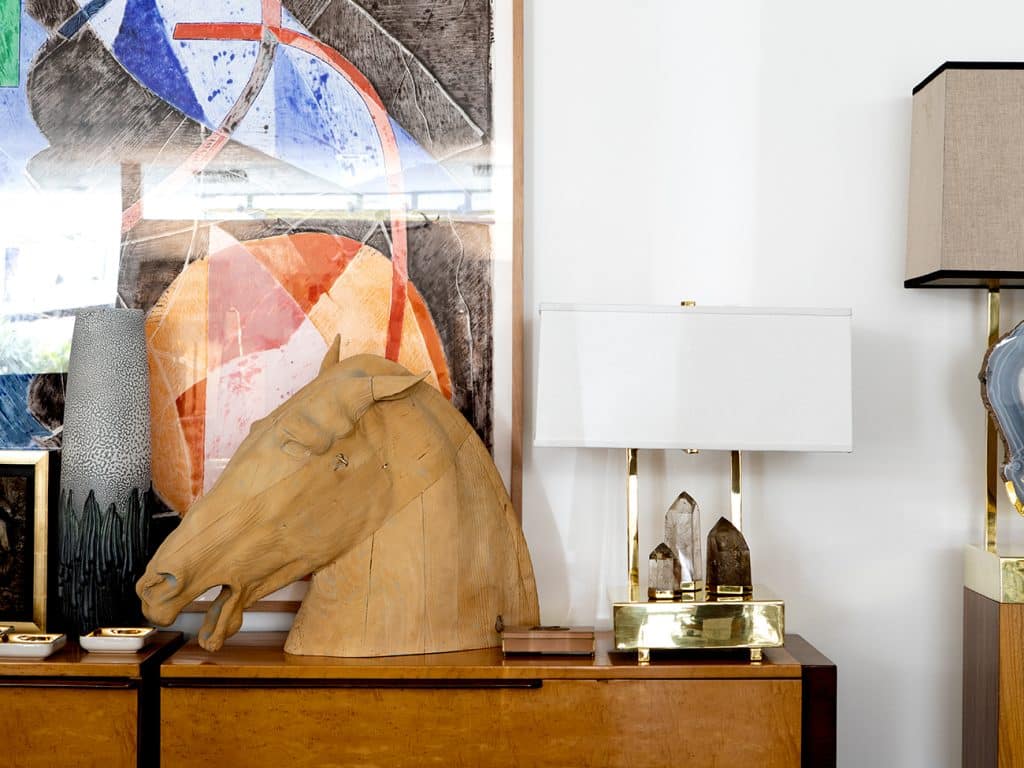
Carved from pine, this equine bust, modeled on one of the Elgin Marbles horse heads, has a sandblasted rusticity that stands in stark contrast to the polished burled maple Art Deco chest by Gilbert Rohde. The specimen crystal table and agate floor lamps are one-of-a-kind Dragonette Private label pieces; the abstract artwork is a 1986 monotype by Tom Holland.
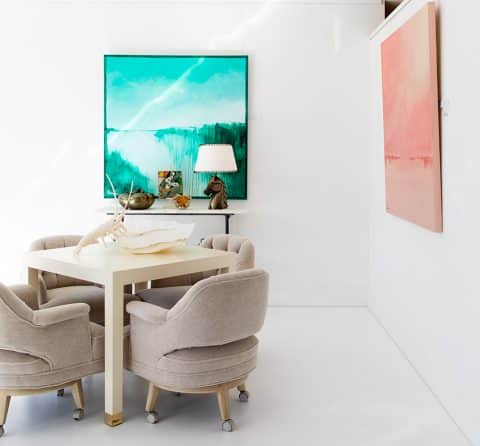
“In 2020, it’s increasingly difficult to find vintage custom furniture,” Dragonette says, referring to such prized pieces as this leather-clad, brass-footed game table by Karl Springer and the Monteverdi-Young rolling chairs, reupholstered in mohair. On the table, an articulated crustacean rests its front legs on a biomorphic polished-onyx bowl. Abstract landscapes by contemporary painter Barry Lantz are mounted on the walls.
“Most of what I design comes out of necessity versus a frivolous notion,” says Dragonette, who has decorated interiors for clients with homes in New York and Los Angeles. “At the end of the day, no one cares how pretty something is if it isn’t comfortable.” As a designer, he prizes contrasts and dialogue. “It’s exasperating when someone buys a 1957 house and won’t consider furniture that was made before 1957.”
The way to keep an interior timeless and fresh, he says, “is to never be slavish, but to embrace all styles and periods. So, even though I am known for the glamour of Hollywood, my eye goes to European antiques — Regency, Empire, Aesthetic Movement — and furniture that is rooted in classical and Etruscan disciplines. One of the things I love doing is that mix of new and old, shiny and patinated, high and low, because if you do it right, nobody knows what is what.”
